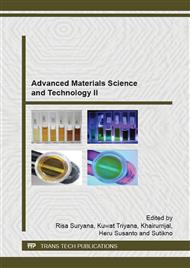p.3
p.7
p.12
p.16
p.20
p.24
p.27
p.31
Application of Serpentine Flux Path Method into a Magnetorheological Valve by FEMM Simulation
Abstract:
Magnetorheological (MR) valve is one of the basic ways to apply and accommodate the MR fluid (MRF) into most of hydraulic applications. MRF can change its rheological properties controllably, reversibly and instantaneously by exposing it to the magnetic field, where the viscosity of the fluid increased variably proportionate to the intensity of the magnetic field applied to the fluid. Within the MR valve, the region where the MRF is allowed to be flown and exposed to the magnetic field is called the effective region, and the longer the effective region is in the MR valve, the higher the pressure drop can be, which means that the valve can withstand higher pressure from input and output of the valve. Hence, lots of studies and previous researches have been focused on improving the performance of MR valve by elongating the effective region in the valve. This paper presents one of the ways to increase the effective region in the MR valve by using the serpentine flux path method. This method is a way to weave the magnetic flux into the effective region of MR valve by alternating the magnetic and non-magnetic materials to guide the magnetic flux to be exposed into the effective region. In this paper, the method is simulated by using Finite Element Method Magnetics (FEMM) software for analyzing the magnetic flux path and flux density in the valve, to see the various effects of length and gap size of effective region, electromagnetic circuits and geometrical placements of magnetic and non-magnetic materials in the valve before it can be applied into real hardware for experimentation.
Info:
Periodical:
Pages:
7-11
Citation:
Online since:
August 2015
Price:
Сopyright:
© 2015 Trans Tech Publications Ltd. All Rights Reserved
Share:
Citation:


